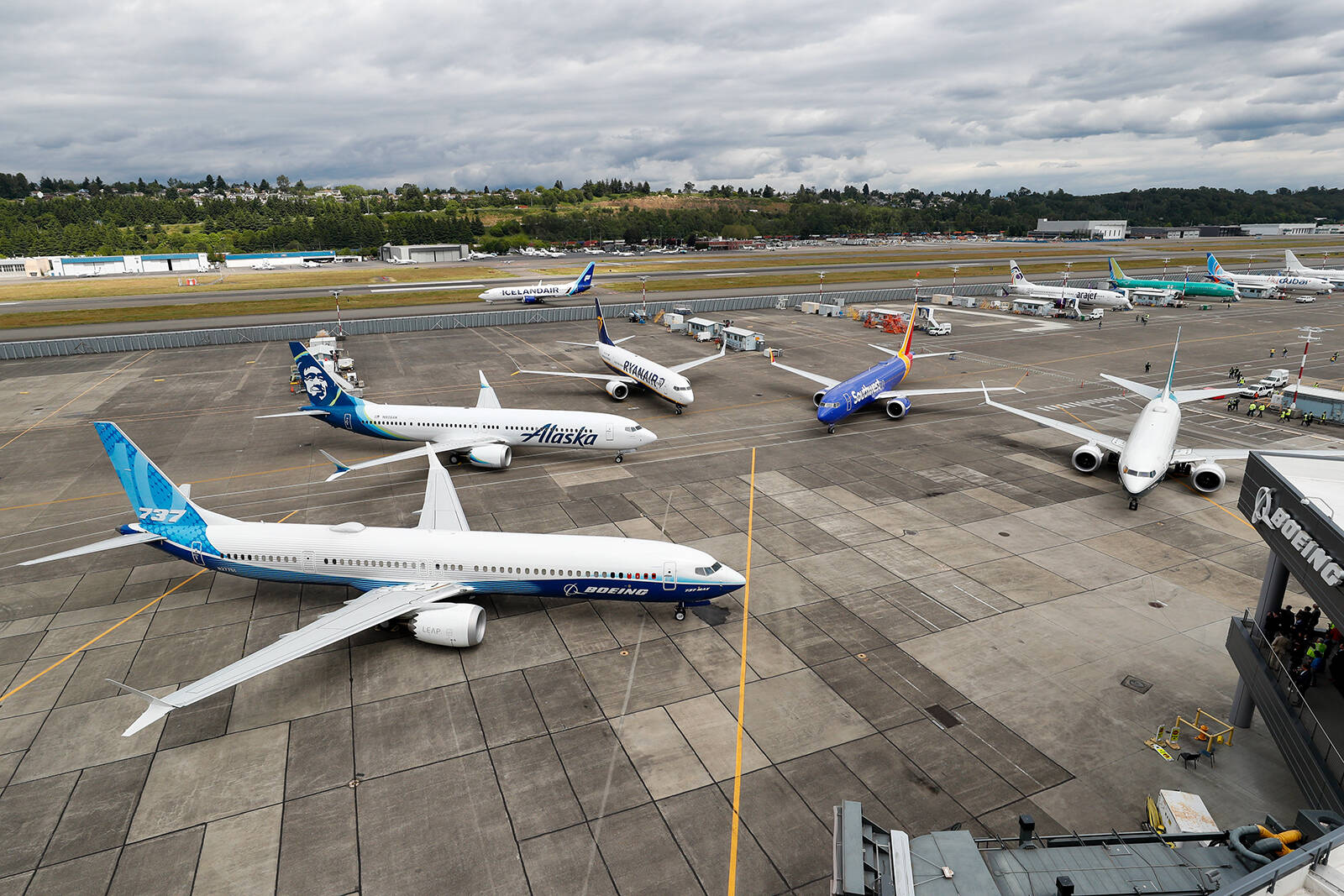Boeing CEO Dave Calhoun said he’s ready to cancel the 737 MAX 10 program if Congress doesn’t extend a regulatory deadline that would allow the jet to enter service without an upgrade to the 737 crew-alerting system.
Canceling plans for the largest member of the MAX family — which has about 640 orders with prospects for more, including from Delta — would be a big blow to the MAX program that would curtail future job growth at the Renton assembly plant.
It would leave Boeing with no viable competitive plane against the successful Airbus A321neo.
Calhoun made the declaration, which is clearly aimed at putting pressure on Congress, in an exclusive advance Q&A with trade magazine Aviation Week before the Farnborough Air Show, which starts on Monday, July 18, and ends Friday, July 22.
Interviewed at Boeing’s new headquarters in Arlington, Virginia, Calhoun told Aviation Week editors that Boeing considers its current MAX 10 design an “all-or-nothing” package, which regulators must accept as-is — without the safety upgrade some have pressed for.
“This is a risk I’m willing to take. If I lose the fight, I lose the fight,” Calhoun said. “A world without the [MAX] 10 is not that threatening.”
Calhoun added Boeing believes the MAX 10 is safe and when Congress passed the law in late 2020 that required the crew alerting upgrade, it never was intended to apply to any member of the MAX family.
“I think our case is persuasive enough,” to get the necessary extension, Calhoun said.
New safety standard
Congress passed the 2020 Aircraft Certification, Safety and Accountability Act to improve oversight of airplane design by the Federal Aviation Administration.
It included a two-year deadline after which all new plane designs must meet the latest safety standard for crew alerting systems — the systems on the plane that tell a pilot what’s wrong if something goes awry in flight.
An internal whistleblower, engineer Curtis Ewbank, revealed in 2019 how Boeing had pushed the FAA during the original certification of the MAX to relax the certification requirements for crew alerts, thus avoiding the need to upgrade a system that was first designed 50 years earlier.
Nevertheless, at the time the legislation passed, lawmakers anticipated that the entire MAX jet family would be certified to carry passengers before the end-of-this-year deadline — and so would once again be exempted from having to meet the latest safety standard.
However, because of two MAX crashes that killed 346 people, the FAA has insisted on more rigorous scrutiny and neither the smallest jet in the family, the MAX 7, nor the largest, the MAX 10, have been certified.
In March, the FAA informed Boeing that the jetmaker’s proposed schedule was unrealistic and that the MAX 10 was unlikely to be certified by the end of the year.
For Boeing, that meant a looming unexpected requirement to upgrade the MAX 10 — making its cockpit different from every other MAX model and requiring airlines to provide MAX 10 pilots with separate training.
Sen. Maria Cantwell, D-Wash., who chairs the Senate committee that helped draft the FAA reform law, has said she’s inclined to grant an extension for Boeing provided the FAA approves it.
In contrast, Rep. Peter DeFazio, the Oregon Democrat who leads the U.S. House Transportation and Infrastructure Committee, opposes Congress extending the waiver.
Since then, the pressure on Congress has grown.
Families of the victims of the two MAX crashes have campaigned to persuade Congress not to grant the extension.
In April, Ewbank, along with prominent FAA whistleblower Joe Jacobsen, gave Cantwell’s Senate committee a technical proposal to upgrade Boeing’s 737 MAX cockpit to current design standards.
And last month, an independent report commissioned by the FAA concluded the original exemption from the crew alerting standard contributed to the two MAX crashes.
Boeing argues the MAX 10 is safe
Asking to once again exempt the MAX from the latest safety standards clearly is an uncomfortable position for Boeing.
Yet, Boeing argues that the MAX 10 crew alerts, though still short of the standard in the legislation, have been upgraded to make the jet safer than the earlier MAX models.
At the insistence of the European and Canadian aviation authorities, Boeing has added a third measure of the angle of attack for the MAX 10, which should greatly reduce the number of erroneous alerts that can confuse pilots.
In addition, Boeing is implementing on the MAX 10 a way for the pilot to silence the most distracting of the erroneous alerts on the two crash flights: the stick shaker, which makes the pilot column vibrate forcefully and noisily if the plane is approaching a stall.
With Boeing having invested in those upgrades, in addition to a new landing gear design required by the longer MAX 10 fuselage, simply abandoning the program now would be a drastic step.
In a poker game with high stakes, Calhoun’s remarks have laid the decision with Congress.
One more consideration he’ll have in mind is that after the November elections the Republicans are expected to take control of Congress and DeFazio, who is retiring, will be gone.
So if the decision slips into early 2023, that’s not the end of the road. The new Congress could well be more inclined to accommodate Boeing.



